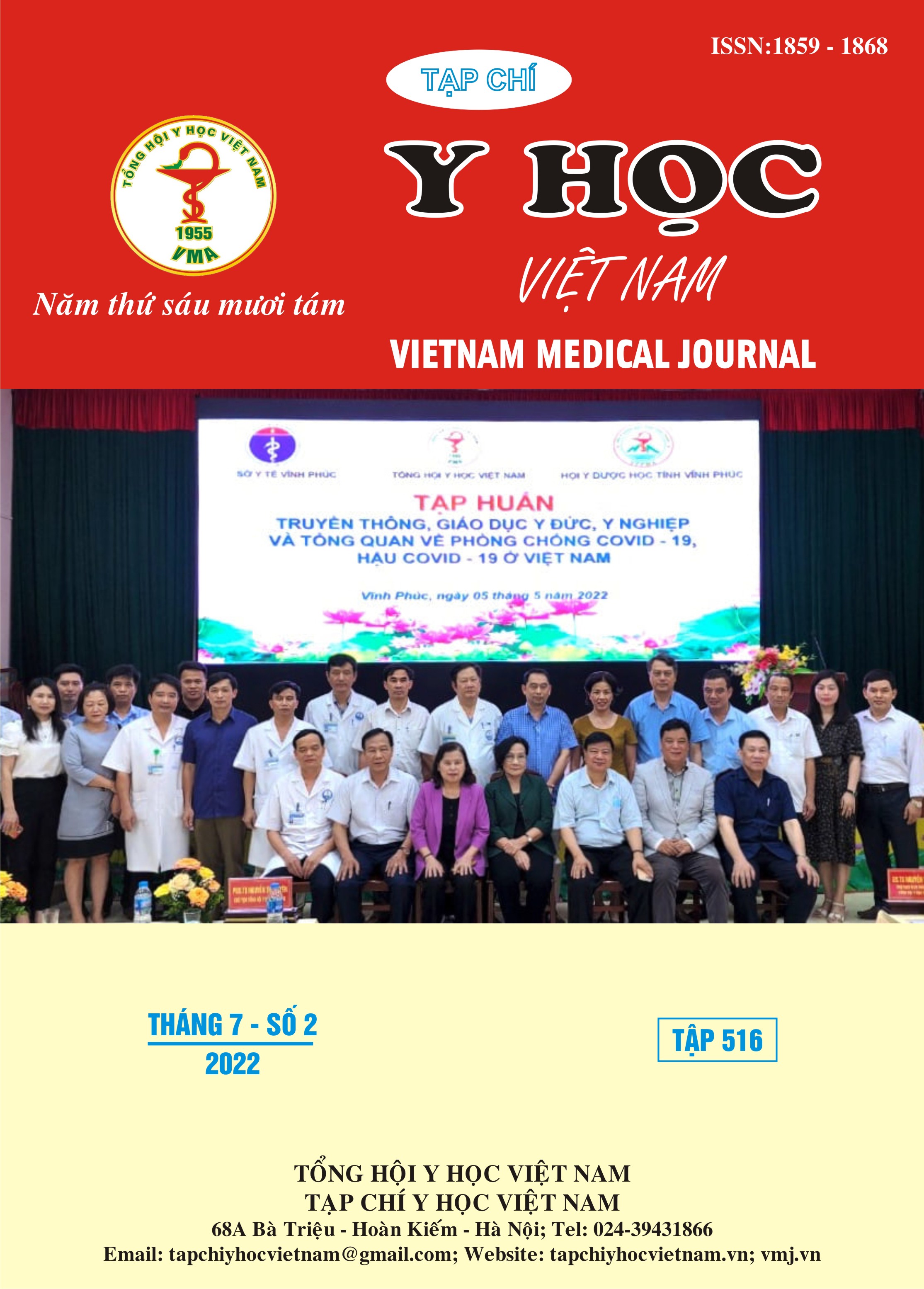CORRELATION BETWEEN CLINICAL AND LABORATORY CHARACTERISTICS IN PATIENTS WITH OCULAR MYASTHENIA GRAVIS
Main Article Content
Abstract
Ocular Myasthenia Gravis is a neuromuscular disorder that is often the beginning of generalized myasthenia gravis. Objectives: To analyze the correlation between the clinical and subclinical characteristics in patients with ocular myasthenia gravis. Subjects and methods: We studied 43 patients with ocular myasthenia gravis treated at Bach Mai Hospital's Neurological Center. Results: Females accounted for 65.1%, males 34.9%, and the mean age was 44.7 ± 14.3. Test neostigmine was positive at 88.4%. The repetitive nerve stimulation test (KTTKLT) was positive for the eye myasthenia gravis at 30.8%, for the generalized myasthenia gravis group at 80%. Anti-acetylcholine receptor (AChR Ab) antibody test was positive for ocular myasthenia gravis at 76.9%, with the generalized myasthenia gravis at 93.3%. There was a correlation between disease duration, ptosis location, and the type of myasthenia gravis (p<0.05), respectively OR (95%CI) was 15.7 (1.8-136.6) and 7,4 (1.7-31.5%). There is a correlation between KTTKLT, the AChR Ab test, and the severity of myasthenia gravis according to Osserman's classification (p<0.05), the corresponding OR (95%CI) is 9.0 (2.1 - 39.5) and 4.2 (1.2 - 28.9). Conclusion: The ophthalmic myasthenia gravis with a positive diagnostic test is still low, so it is necessary to distinguish it from other diseases.
Article Details
Keywords
Ocular Myasthenia Gravis, repetitive nerve stimulation, anti-acetylcholine receptor antibody
References
2. Fan L, Ma S, Yang Y, Yan Z, Li J, Li Z. Clinical differences of early and late-onset myasthenia gravis in 985 patients. Neurol Res. 2019;41(1):45-51. doi:10.1080/01616412.2018.1525121
3. Gilhus NE, Verschuuren JJ. Myasthenia gravis: subgroup classification and therapeutic strategies. Lancet Neurol. 2015;14(10):1023-1036. doi:10.1016/S1474-4422(15)00145-3
4. Kim KH, Kim SW, Shin HY. Initial Repetitive Nerve Stimulation Test Predicts Conversion of Ocular Myasthenia Gravis to Generalized Myasthenia Gravis. J Clin Neurol Seoul Korea. 2021;17(2):265-272. doi:10.3988/jcn.2021.17.2.265
5. Lefvert AK, Bergström K, Matell G, Osterman PO, Pirskanen R. Determination of acetylcholine receptor antibody in myasthenia gravis: clinical usefulness and pathogenetic implications. J Neurol Neurosurg Psychiatry. 1978;41(5):394-403
6. Osserman KE. Ocular Myasthenia Gravis. Invest Ophthalmol Vis Sci. 1967;6(3):277-287.
7. Ullah U, Iftikhar S, Javed MA. Relationship between Low and High Anti-acetylcholine Receptor Antibody Titers and Clinical Severity in Myasthenia Gravis. J Coll Physicians Surg--Pak JCPSP. 2021;31(8):965-968. doi:10.29271/jcpsp.2021.08.965
8. Wang W, Chen YP, Wei DN. [The clinical characteristics of early-onset versus late-onset types of myasthenia gravis]. Zhonghua Nei Ke Za Zhi. 2011;50(6):496-498. doi:10.3760/ cma.j.issn.0578-1426.2011.06.013


